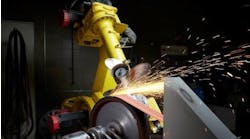Boeing, NASA Look to Flying Geese in Chase for Jet-Fuel Savings
Boeing Co. and NASA have found an inexpensive way to cut airline fuel bills by borrowing a trick from the world’s greatest long-distance aviators: migratory birds.
By lining up cruising aircraft in a V-shaped formation favored by Canada geese, carriers would be able to produce a leap in efficiency without investing in structural makeovers or futuristic technology. The idea is to link the flying convoys safely using navigation and collision-avoidance tools that already are widely installed in cockpits.
“Think of a car drafting a truck, or one bike rider drafting another,” said Mike Sinnett, Boeing’s vice president for product development. “It essentially allows you, if you are flying in the right spot, to reduce your fuel burn. But you’ve got to be there for a long time.”
Wake surfing, as the avian technique is known, involves harvesting energy from a lead plane -- a potential way to cut fuel bills, which typically rank as the biggest or second-biggest expense for airlines. A researcher at the National Aeronautics and Space Administration points to studies showing fuel savings of 10% to 15%, on a par with pricier options such as upgrading engines or installing winglets.
The concept is one of dozens under study at Boeing. The company is also looking at long, glider-like wings beneath a plane to save fuel, as well as how to manage the boom from supersonic flights. The Chicago-based planemaker is also studying artificial intelligence that would allow a single pilot to be at the controls during a long cruise, a potential step toward fully autonomous flights.
Wake surfing -- also known as vortex surfing or, to get super technical, automated cooperative trajectories -- takes advantage of the cone-shaped columns of air that swirl for miles behind an airplane’s wingtips. Through careful positioning, trailing aircraft can gain extra lift from the upward portion of that circular flow, saving fuel without giving passengers a bone-rattling ride.
Scheduling Hurdle
There’s a catch, though, and it isn’t just that lower oil prices have provided airlines some relief on fuel bills in recent years, or that current regulatory requirements mandate minimum spacing between planes.
Before jets can glide on vortices at 30,000 feet (9,100 meters), carriers would need to determine how to schedule planes onto the same route with extreme precision. That’s a big ask for an industry already flummoxed by weather, employee hours, maintenance requirements and air-traffic congestion.
“Airlines can barely keep a schedule, anyway,” said aviation consultant Robert Mann, an aerospace engineer and former airline executive. “I would argue that they can’t.”
Flying in formation holds greater promise for services with fewer scheduling variables, like manned and unmanned military aircraft, or, eventually, flocks of Amazon drones dropping off packages, he said.
NASA Experiment
Cargo operators might be able to change scheduling or routing to get multiple airplanes to the same place at the same time, said Curt Hanson, a senior flight-controls researcher at the National Aeronautics and Space Administration.
A study that wrapped up this year may help debunk the view that airlines would need extensive cockpit upgrades to fly in tight formation. Hanson looked at linking wake-surfing Gulfstream business jets using equipment that has to be installed in U.S. aircraft by 2020. The tool -- automatic dependent surveillance-broadcast, or ADS-B -- transmits a plane’s position and velocity twice a second, providing more accurate readings than radar.
NASA measured considerable fuel savings that could be gained without making passengers or air crews uncomfortable, said Hanson, who is based at NASA’s Armstrong Flight Research Center in Edwards, California.
“We were able to fly in a stable, commanded location within the wake for long periods of time,” he said. The agency is still analyzing data and won’t publish the findings for months.
Fuel Savings
Since the study isn’t final, Hanson wouldn’t discuss the magnitude of fuel savings. But he pointed to a wake-surfing demonstration of Boeing C-17 military transport planes earlier this decade that lowered fuel use about 10 percent. And a study pairing F-18 fighters around the turn of the millennium showed that formation flying reduced drag as much as 15 percent.
“We have the technology today,” Hanson said.
And the scheduling conundrum?
If airlines get serious about the technique, he said, “someone will step in to fill that void and make that product.”
By Julie Johnsson




